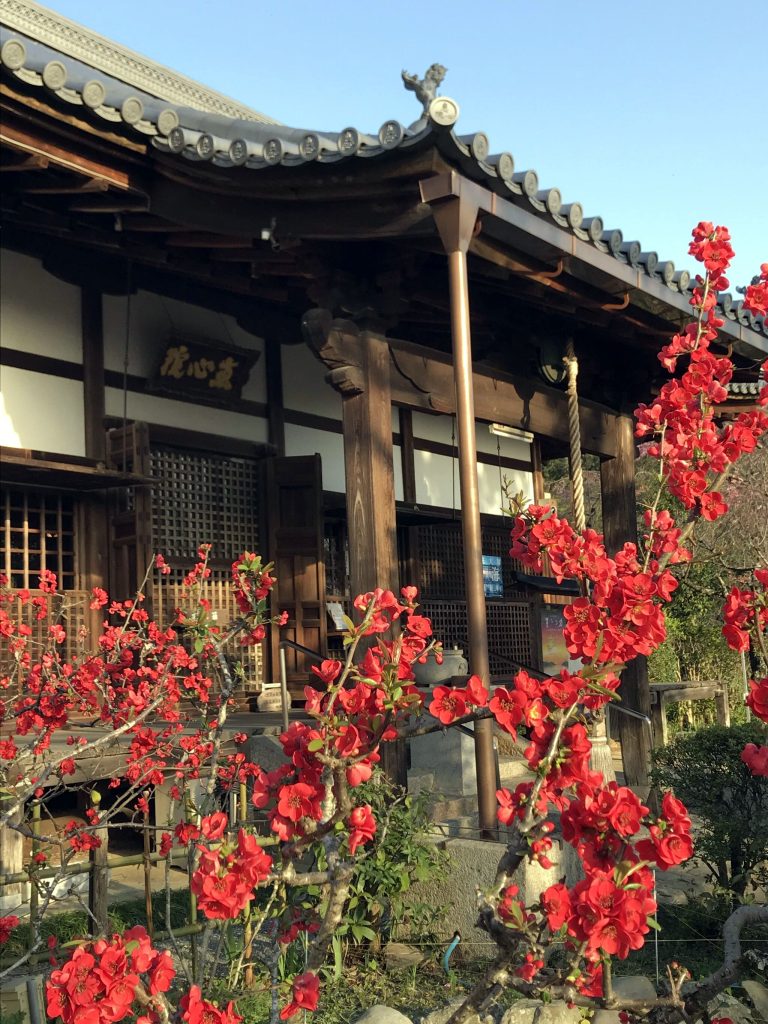
At Eishin-in, known as the ‘Temple of Flowers’ in Uji City, Kyoto Prefecture, bright red boke blossoms are in full bloom. Due to the recent cold weather, there are few people around, but it still has a gorgeous atmosphere. Eishin-in is about a 15-minute walk from JR Uji Station and approximately 10 minutes on foot from Keihan Uji Station.
The origins of this temple are associated with the ancient Ryusen-ji, but it was later revived by the renowned monk Eshin Sozu Genshin (恵心僧都源信), famous as the author of ‘Ojo Yoshu’ (往生要集). Eventually, it came to be known as Eishin-in. Eshin Sozu is said to have rescued Ukihune, the heroine of the ‘Tale of Genji’ Uji Chapters, who had plunged into the Uji River in distress due to a love triangle. He is considered the model for the monk Yokawa (横川の僧都) in the tale.
Eshin’s Pure Land Buddhism, expounded in ‘Ojo Yoshu,’ had a significant influence on later figures like Honen and Shinran. Even in today’s discussions on end-of-life matters, his teachings, presented in a simple and accessible manner, continue to offer valuable insights.
「花の寺」で知られる、京都府宇治市にある恵心院に真っ赤な木瓜の花が咲いています。折からの寒波で人影はまばらですが、華やかな雰囲気を漂わせています。恵心院へはJR奈良線の宇治駅からは徒歩で15分、京阪宇治線の宇治駅からは徒歩10分ほどでたどり着くことができます。
当寺のはじまりは、古刹龍泉寺と伝えられていますが、やがて「往生要集」の著者として名高い恵心僧都源信(えしんそうずげんしん)によって再興され、恵心院と称するようになりました。源信は、二人の愛人の板挟みになり、その苦悩から宇治川に入水した源氏物語宇治十帖のヒロイン浮舟を助け、新たな道を歩ませることとなった横川の僧都(よかわのそうず)のモデルともいわれている僧侶です。
源信が「往生要集」の中で説いた浄土念仏の思想は、後の法然や親鸞に大きな影響を与えましたし、終活が話題になる現代においても示唆に富む教えが易しく説かれています。
